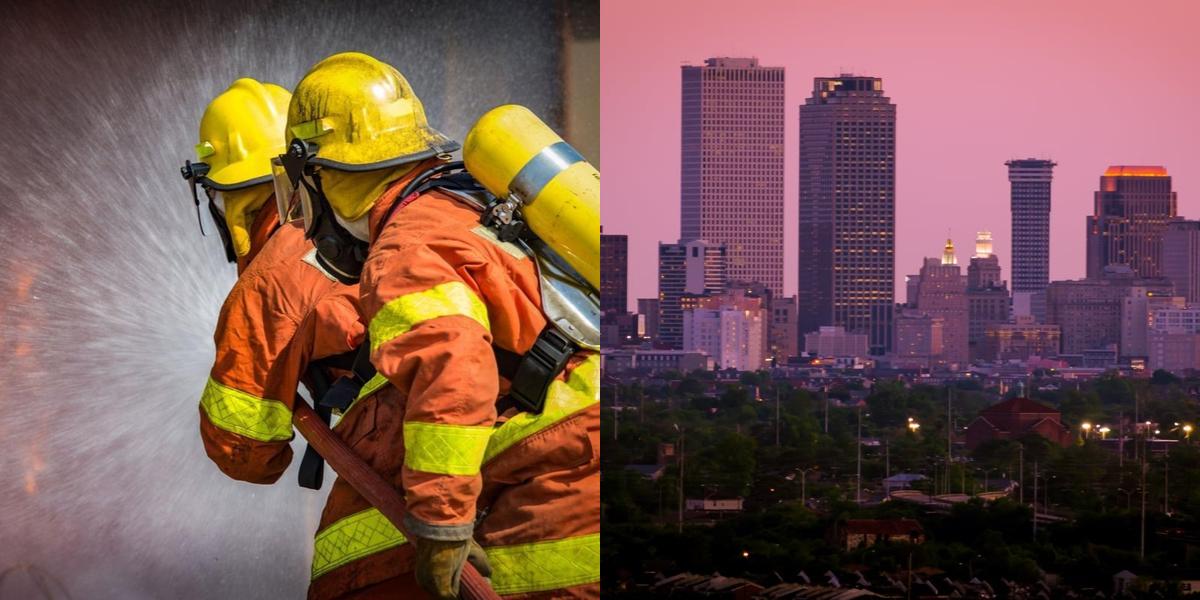How to Become a Firefighter in Louisiana

What is a Firefighter?
A firefighter is a trained professional who responds to emergency situations involving fires, accidents, and other hazardous incidents. Their primary responsibility is to extinguish fires and protect lives and property. Firefighters also provide medical assistance, conduct rescue operations, and educate the public on fire safety.
How do I get a job as a Firefighter?
Getting a job as a firefighter can be highly competitive, as there are often many qualified candidates vying for a limited number of positions. However, with the right preparation and determination, you can increase your chances of landing a job as a firefighter. Here are some steps you can take to get a job as a firefighter:
-
Gain relevant experience: Before applying for firefighter positions, it's important to gain relevant experience that can set you apart from other candidates. Consider volunteering as a firefighter or joining a fire department as a reserve or auxiliary firefighter. This will allow you to gain practical experience in firefighting operations and demonstrate your commitment to the profession.
-
Maintain physical fitness: Firefighting is a physically demanding job, so it's important to maintain a high level of physical fitness. Regular exercise, including cardio and strength training, can help you build the strength, endurance, and agility required for the job. Many fire departments have specific physical fitness standards that candidates must meet, so make sure to familiarize yourself with these requirements and work towards meeting them.
-
Prepare for the interview: The interview is a crucial part of the firefighter hiring process. Research common interview questions for firefighter positions and practice your responses. Highlight your relevant skills, experience, and personal qualities that make you a strong candidate for the job. It's also important to demonstrate your knowledge of the fire department and the community it serves.
-
Stay updated on industry trends: Firefighting techniques and technologies are constantly evolving, so it's important to stay updated on the latest industry trends. Attend training workshops and seminars, read industry publications, and participate in online forums or discussion groups to stay informed. This will not only demonstrate your commitment to professional development but also give you an edge over other candidates during the hiring process.
-
Network with other firefighters: Networking can be a valuable tool in your job search. Attend firefighter conferences, join professional organizations, and connect with other firefighters through social media platforms like LinkedIn. Building relationships with other firefighters can provide you with valuable insights, mentorship opportunities, and potential job leads.
Career Paths and Opportunities after Becoming a Firefighter
Becoming a firefighter opens up a wide range of career paths and opportunities. While firefighting is often associated with responding to emergencies and extinguishing fires, firefighters also play a vital role in various other areas. Here are some career paths and opportunities you can explore after becoming a firefighter:
-
Fire Investigation: Fire investigators are responsible for determining the cause and origin of fires. They work closely with law enforcement agencies and insurance companies to conduct thorough investigations and gather evidence. Fire investigators may also provide expert testimony in legal proceedings. If you have a keen interest in forensic science and problem-solving, a career in fire investigation may be a good fit for you.
-
Emergency Medical Services (EMS): Many firefighters are trained as emergency medical technicians (EMTs) or paramedics, allowing them to provide advanced medical care in emergency situations. If you enjoy helping others and have an interest in healthcare, a career in EMS can be a rewarding option. Firefighters with EMS training can work on ambulances, in hospital emergency rooms, or as part of specialized rescue teams.
-
Specialized Rescue Teams: Firefighters may also have the opportunity to join specialized rescue teams, such as technical rescue teams or hazardous materials (HAZMAT) response teams. These teams are trained to handle complex and high-risk situations, such as rescuing individuals from collapsed buildings, performing water rescues, or safely handling hazardous materials incidents. Specialized rescue teams often require additional training and certifications beyond the basic firefighter certification.
-
Fire Prevention and Education: Firefighters play a crucial role in fire prevention and education. They conduct fire safety inspections, assess potential fire hazards, and provide educational programs to the community. Fire prevention specialists work to raise awareness about fire safety and develop strategies to minimize the risk of fires. If you have strong communication and teaching skills, a career in fire prevention and education can be a fulfilling choice.
-
Leadership and Management Roles: As you gain experience in the firefighting profession, you may have the opportunity to advance into leadership and management roles. These positions involve overseeing the operations of a fire department, managing budgets, coordinating training programs, and developing strategic plans. Leadership and management roles require strong organizational and interpersonal skills, as well as the ability to make critical decisions under pressure.
How Much does a Firefighter Make?
The salary of a firefighter can vary based on factors such as location, experience, and the size of the fire department. According to the Bureau of Labor Statistics, the median annual wage for firefighters was $50,850 in May 2020. The lowest 10 percent earned less than $25,850, while the highest 10 percent earned more than $94,720.
For entry-level firefighters, the starting salary can be lower than the median wage. However, as they gain experience and move up the ranks, their salary can increase significantly. It's important to note that these figures are just averages, and the actual salary can vary depending on various factors.
Final Thoughts
Becoming a firefighter is a challenging yet highly rewarding career choice. It requires dedication, physical fitness, and the ability to work well under pressure. By obtaining your firefighter certification, gaining relevant experience, and staying current with industry trends, you can increase your chances of securing a job as a firefighter. Additionally, exploring different career paths and opportunities within the firefighting profession can allow you to further develop your skills and make a positive impact in your community. So, if you're passionate about helping others and making a difference, consider pursuing a career as a firefighter and embark on an exciting journey in public service.
Exploring diverse professional options? Dreambound has comprehensive guides to assist you in making well-informed decisions. Take a look at these resources:

Justine Tacmo is part of the Growth team at Dreambound. He assists the organization by updating critical information so students receive the most up-to-date information for their desired trade schools. Besides, he has a passion for writing and expresses it through poetry, covering themes of life, love, and mental health, which is also his advocacy.




